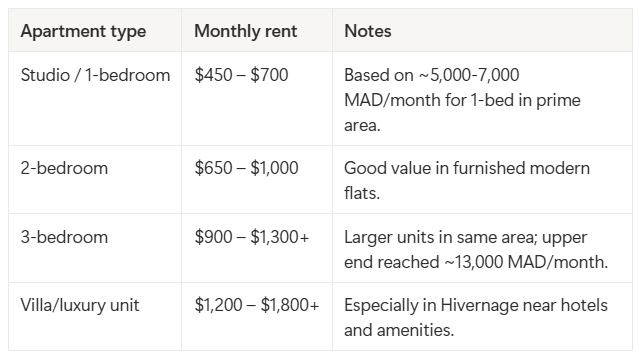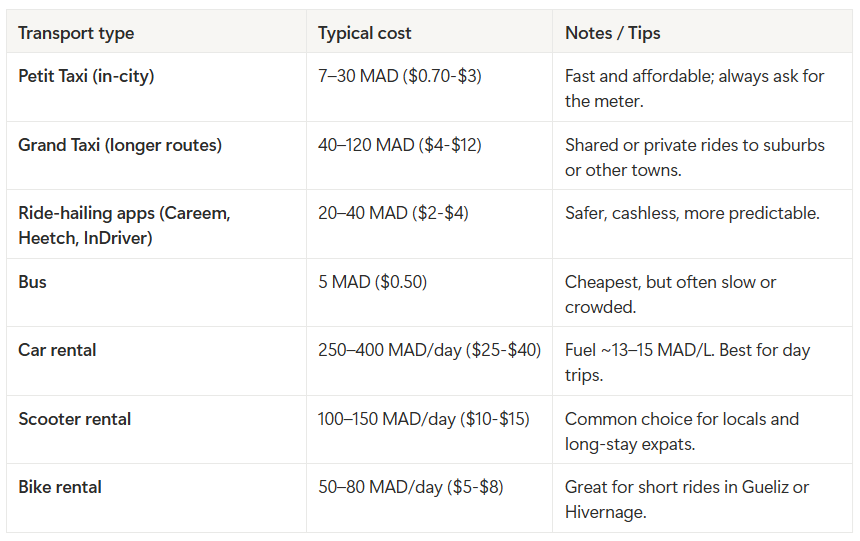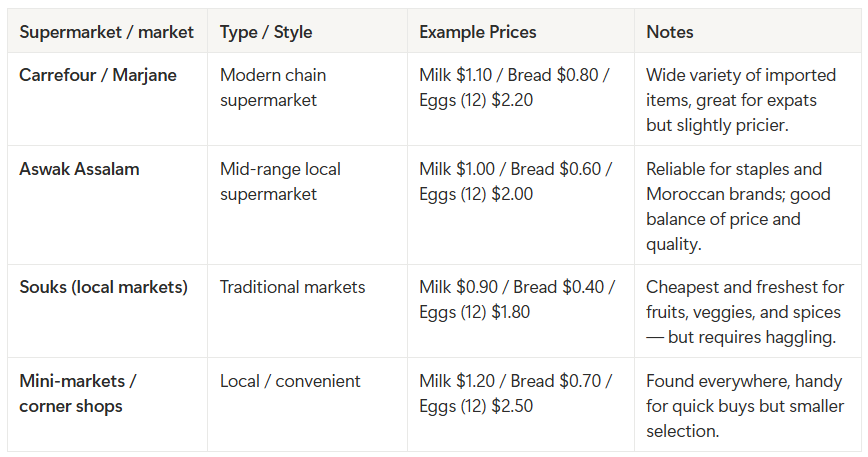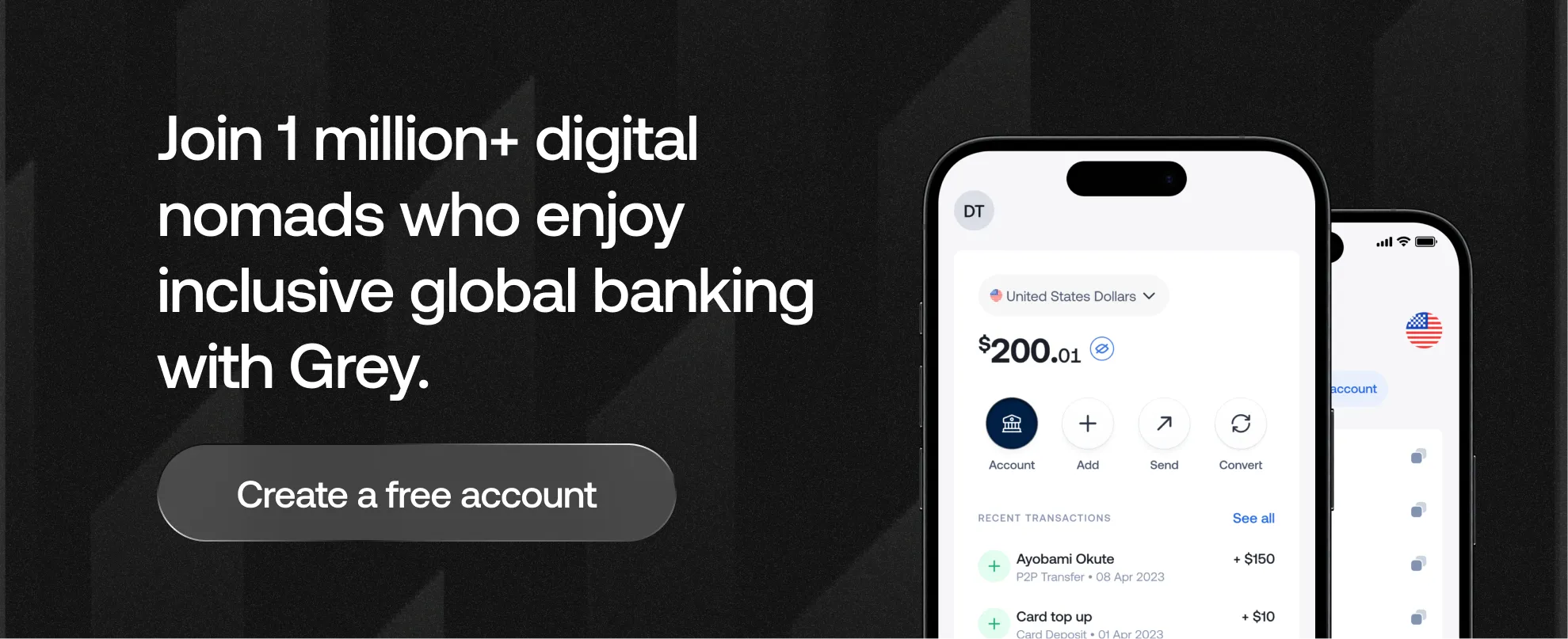

Marrakech is a maze of colours, sounds, and scents. There’s a reason this city feels timeless: red walls glowing under desert light, rooftop terraces overlooking the Atlas Mountains, and an energy that can make every day feel cinematic.
Living in Marrakech means balancing comfort with culture, and the cost of that balance depends on where you choose to stay. In this article, I’ll walk you through what life in Marrakech might cost you.
Finding a place to live in Marrakech means choosing your vibe: a traditional riad in the Medina, a modern flat in the city centre, or a house in the suburbs with more space. Rents vary widely depending on the district, whether the property is furnished or unfurnished, and whether utilities are included.
Modern areas like Gueliz and Hivernage cater to expats with higher budgets, while the Medina offers a more traditional (and often cheaper) lifestyle.
Marrakech’s modern face. These neighbourhoods blend European-style cafés, boutiques, and coworking spaces with Moroccan flair. Gueliz is lively and central, while Hivernage feels more upscale, full of tree-lined streets, embassies, and luxury hotels. Both are favourites among expats for their walkability, nightlife, and convenience.

The beating heart of Marrakech. The Medina is all about atmosphere, maze-like alleys, vibrant souks, rooftop terraces, and historic riads filled with tilework and charm. It’s not the quietest area, but it’s unmatched in culture and authenticity. Ideal for those who want to live in the middle of it all.

An oasis of calm on the city’s outskirts. Palmeraie (the “Palm Grove”) is known for its luxury villas, lush gardens, and tranquil atmosphere, being perfect for those who value privacy and space. You’ll find gated communities, golf resorts, and some of Marrakech’s most exclusive properties here.

Peaceful, family-friendly, and affordable. These districts are slightly removed from the tourist buzz but offer excellent value for long-term living. Expect newer apartment complexes, local markets, and easy access to schools and supermarkets. They’re ideal for expats or remote workers seeking a slower pace.

Marrakech’s energy extends to how people move around. From the narrow streets of the Medina to the wide boulevards of Gueliz, getting around is part of daily life, and expats quickly learn to mix different transport modes for convenience and comfort.
Taxis (Petit & Grand)
Taxis are the backbone of Marrakech transport. There are two types: Petit Taxis, which only operate within the city, and Grand Taxis, used for longer distances or intercity trips. Petit Taxis are small (usually old Peugeots), metered, and cheap, while Grand Taxis operate on fixed routes and can be shared.
Ride-hailing apps (Heetch, Yango)
Apps like Heetch and Yango are popular alternatives to taxis, especially for those who prefer transparent pricing and cashless payment. Prices are usually slightly higher than regular taxis but much more predictable and comfortable.
Buses
Public buses are the cheapest option but not always the most comfortable or punctual. They connect most parts of the city, including Gueliz, Medina, and Palmeraie, but can get crowded during rush hours.
Car rentals/driving
Driving in Marrakech offers flexibility, especially if you plan to explore outside the city, like the Atlas Mountains or nearby desert towns. Traffic can be chaotic in the centre, but it’s manageable with patience.
Motorbikes and scooters
Scooters are a Marrakech classic — locals use them everywhere, even inside the Medina. Expats often rent or buy scooters for convenience.
Walking and bicycles
Marrakech is walkable in areas like Gueliz and Hivernage, but the Medina’s narrow alleys can get crowded. Cycling is possible in newer districts but less common in the old town due to uneven streets and traffic.
Here’s a quick breakdown:

Tip: Most people combine taxis and ride-hailing apps for daily use, while scooters or rented cars are ideal for flexibility. If you live in Gueliz or Hivernage, you can easily walk to cafés and shops; in Palmeraie, you’ll likely depend more on a car or taxi.
Food in Marrakech is a full-on sensory experience — the colours of the souks, the smell of spices, and the mix of Moroccan and international cuisines make every meal a little adventure. Whether you’re grabbing a tagine from a street stall or dining under lantern lights in Gueliz, there’s something delicious for every budget.
Restaurants
Eating out in Marrakech can be as affordable or as fancy as you want. Street food and local cafés serve hearty Moroccan dishes for a few dollars, while modern restaurants and rooftop lounges in Gueliz, Hivernage, or Medina offer global menus at higher prices.
Marrakech has a strong café culture too. You’ll find cosy spots for working remotely or people-watching over coffee and pastries for 20-40 MAD ($2-4).
Supermarkets and markets
Grocery shopping depends on your habits. You can stick to local markets (souks and neighbourhood shops) for fresh, cheap produce, or head to big supermarkets for convenience and imported goods.

Most expats mix both worlds by buying fresh produce and bread at local markets and getting pantry staples or international items (like cheese, cereal, or wine) from Carrefour or Marjane. Grocery prices in Hivernage and Gueliz are a bit higher than in local neighbourhoods like Daoudiate or Massira.
Here’s a realistic monthly breakdown in USD:
For one person
Total monthly food budget: $320-560
Comfortable enough to cook most meals at home, eat out a few times a week, and still enjoy Marrakech’s vibrant food scene.
For a couple or small family
Total monthly food budget: $640-1,000
That covers a balance between home cooking, casual lunches, nights out and the occasional treat at one of Marrakech’s rooftop restaurants or hotel cafés.
Marrakech is among the priciest cities in Morocco, and utilities can fluctuate with the season, especially during the hot summer months. Let’s take a look at typical monthly expenses:
Electricity
Electricity bills tend to rise in summer, when air conditioning or fans are used daily. Heating can also increase costs slightly during winter nights.
Water
Water in Marrakech is inexpensive, though you’ll likely use more in summer due to the heat. Some rentals, especially furnished ones, include water in the rent.
Gas
Most homes use bottled gas for cooking and heating water. Bottled gas (bonbon de gaz) is cheap and widely available from local shops.
Internet
Internet coverage in Marrakech is solid, especially in central areas. Fibre connections are increasingly common.
Mobile / Cell phone
Mobile plans are affordable and flexible, with prepaid and postpaid options widely available.

Healthcare in Marrakech is a mix of affordable public options and high-quality private facilities catering to locals and expats alike. While the public system covers the basics, most foreigners prefer private hospitals for faster service, better facilities, and English-speaking doctors.
Public healthcare
Morocco’s public healthcare system provides low-cost access to consultations, emergency services, and hospital care. However, facilities can be crowded, and waiting times are often long..
If you’re staying long-term and speak some French or Arabic, you can use the public system for basic needs. Still, most expats rely on private hospitals or clinics for reliable and faster care.
Private healthcare and insurance
Private healthcare in Marrakech is relatively affordable compared to Europe or the US. Clinics like Clinique Internationale Marrakech and Polyclinique du Sud are popular among expats for their quality and English-speaking staff.
Private health insurance is highly recommended for expats staying more than a few months. Major insurers include AXA, Allianz, and Saham Assurance.

Tip: Even with private insurance, many expats choose to pay out of pocket for smaller visits since consultations are quite affordable. Pharmacies are well stocked, and most common medications are available over the counter.
Marrakech offers a lower cost of living than most Western or Gulf cities, while still providing a high quality of life, with vibrant markets, rooftop cafés, and all. Your expenses will vary depending on your lifestyle and where you live.

You can live comfortably in Marrakech for around $1,200–1,500/month, though costs rise if you prefer modern accommodation or eat out frequently.
Marrakech is where old-world charm meets modern living, from the hum of the souks to the calm of rooftop cafés. It’s an inspiring base for freelancers, remote workers, and expats who earn abroad but spend in dirhams.
With Grey, you can receive international payments in USD, GBP, or EUR, exchange when the rates are best, and withdraw MAD straight to a Moroccan bank account. It’s fast, fair, and built for people living global lives.
Open your Grey account today and keep your focus on the magic of Marrakech, not the money transfers.




.svg)
Back to top